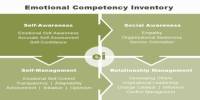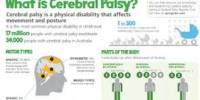According to new University of California San Diego research, personalization through curated product recommendations is one of the biggest marketing trends in the online shopping industry; however, it can change whether people buy a product they were considering.
Uma R. Karmarkar, assistant professor at the UC San Diego Rady School of Management and School of Global Policy and Strategy, discovered that displaying items from the same category as the target product, such as a board game paired with other board games, increases the likelihood of a target product being purchased. Consumers, on the other hand, are less likely to purchase the target product if it is displayed alongside products from different categories, such as a board game displayed alongside kitchen knives.
The study used eye-tracking – a sensor technology that can detect where a person is looking – to investigate how different types of displays influenced visual attention. Participants in the study spent the same amount of time looking at their target product when it was paired with similar items or with items from different categories; however, shoppers spent more time looking at the mismatched products, despite the fact that they were only supposed to be there “for display.”
When the information is mismatched, the scope of the decision changes. A mismatched display is comparable to shopping in a larger store. You may be interested in a featured board game, but if you can see other products to purchase, this board game may not be the first type of purchase you want to make. The mismatched items draw extra attention and compete with the category you were thinking about.
Uma R. Karmarkar
“What’s surprising is that when I asked people how much they liked the target products, their preferences didn’t change across display settings,” Karmarkar explained. “The findings show that it is not so much about how much you like or dislike the item you’re looking at as it is about your purchasing process. The display items around the target product do not appear to change how much attention you pay to it, but they can influence your decision to buy it or not.”
According to Karmarkar, who has PhDs in both consumer behavior and neuroscience, the findings suggest that seeing similar options on the page reinforces the idea to consumers that they’re making the right kind of decision by purchasing an item that fits the category on display.
“When the information is mismatched, the scope of the decision changes,” she explained. “A mismatched display is comparable to shopping in a larger store. You may be interested in a featured board game, but if you can see other products to purchase, this board game may not be the first type of purchase you want to make. The mismatched items draw extra attention and compete with the category you were thinking about.”

The study, which will be published in Frontiers in Neuroscience, included 58 participants ranging in age from 18 to 40, who had to make 36 online purchases for real products using real money. The findings demonstrating differences in purchase rates replicate a series of studies published by Karmarkar in 2017. She was able to measure which parts of the display were attracting more or less attention in the new study. Furthermore, the upcoming paper demonstrates that matched displays increase purchase rates even when they include more attention-grabbing information, such as price details.
Karmarkar spoke with industry experts about product recommendation systems, which influenced her approach to these questions. Recommender algorithms can be designed in a variety of ways to meet the needs of various retailers. When retailers use cross-promotion tactics based on prior customer behavior or inventory that needs to be sold quickly, products can be displayed with “mismatched” displays.
Karmarkar frequently uses a board game example based on a real-life experience she had while shopping online in October.
“I was browsing games like ‘Bananagrams,’ and when I reloaded the product page, a display of Halloween costumes appeared,” she explained. “Based on my search history, the store most likely assumed I had a family. So, while they obviously wanted me to buy the game, they also knew they had an active shopper who might be interested in the Halloween costumes that needed to be sold by the end of the month. It appears to be a win-win situation, but our research suggests that creating this mismatched situation may have reduced the likelihood that I would add the game to my cart.”
While the study is useful for online retailers to understand the benefits of showing same-category options on a specific product page, the research is also beneficial to consumers.
“This demonstrates how external forces shape our decisions in ways we may not recognize,” she said. “If a shopper is looking for something specific, they are more likely to pay attention to recommender displays. When people are simply ‘browsing stuff online,’ however, different page designs can result in different patterns of attention. Store displays can influence what we buy, even if they don’t influence what we like.”
















